Table of content
Introduction
Steamed buns, known as baozi in Chinese cuisine, are soft, fluffy pillows of dough filled with savory or sweet ingredients. Traditionally made with all-purpose flour or bread flour, these buns are beloved for their tender texture and versatility. However, as health-conscious trends rise, many home cooks and bakers wonder: Can whole wheat flour, a nutrient-rich alternative, be used to create steamed buns without sacrificing their signature lightness? This article explores the science, techniques, and practical tips for successfully incorporating whole wheat flour into steamed bun recipes, addressing challenges like density, texture, and flavor.
Understanding Whole Wheat Flour vs. Traditional Flours
To answer this question, it’s essential to grasp the differences between whole wheat flour and the refined flours typically used in steamed buns.
-
Composition:
- Whole wheat flour is milled from the entire wheat kernel, including the bran, germ, and endosperm. This retains fiber, vitamins (B-complex, E), minerals (iron, magnesium), and antioxidants.
- All-purpose flour or bread flour is refined, meaning the bran and germ are removed, leaving primarily the starchy endosperm. This results in a finer texture and longer shelf life but fewer nutrients.
-
Protein Content:
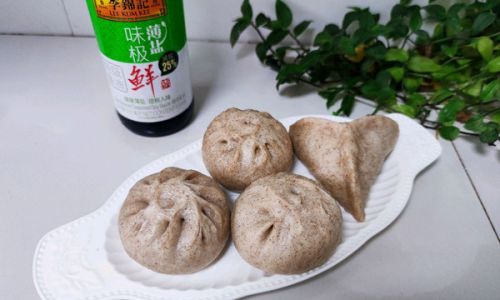
- Bread flour has the highest protein content (12–14%), ideal for gluten development, which gives dough elasticity and structure.
- All-purpose flour contains 9–12% protein.
- Whole wheat flour has a similar protein range (11–15%) but includes sharp bran particles that interrupt gluten formation.
-
Hydration and Absorption:
Whole wheat flour absorbs more liquid than refined flours due to the bran’s fibrous structure. This affects dough consistency and requires adjustments in recipes.
Challenges of Using Whole Wheat Flour for Steamed Buns
While whole wheat flour offers nutritional benefits, its properties pose challenges for achieving the airy texture of traditional steamed buns:
-
Gluten Development:
The bran in whole wheat flour cuts through gluten strands during kneading, weakening the dough’s structure. This can lead to dense, crumbly buns instead of soft, springy ones. -
Density and Heaviness:
Without sufficient gluten, the dough may not rise properly, resulting in compact buns. The bran’s weight also contributes to a denser crumb. -
Flavor and Aroma:
Whole wheat flour has a nutty, slightly bitter taste compared to the neutral flavor of refined flours. This can be desirable but may clash with delicate fillings. -
Staling:
Whole wheat buns tend to stale faster due to the bran’s oil content, which oxidizes over time.
Techniques to Improve Whole Wheat Steamed Buns
Despite these challenges, bakers can employ several strategies to mitigate whole wheat flour’s drawbacks:
Adjust Hydration Levels
Whole wheat flour requires 10–20% more liquid than all-purpose flour. Start by adding 70–75% of the liquid called for in a traditional recipe, then gradually increase until the dough is soft and slightly tacky but not sticky.
Enhance Gluten Development
- Vital Wheat Gluten: Add 1–2 teaspoons per cup of whole wheat flour to boost gluten content. This improves elasticity and rise.
- Kneading: Knead the dough longer (8–10 minutes by hand or 6–8 minutes with a stand mixer) to strengthen the gluten network.
Blend Flours
Combine whole wheat flour with all-purpose or bread flour to balance nutrition and texture. A 50:50 ratio often yields acceptable results, while a 70:30 whole wheat-to-refined flour mix retains more flavor without excessive density.
Use a Tangzhong or Yudane Starter
These Asian baking techniques involve pre-cooking a portion of the flour and liquid to create a gelatinized starch, which increases moisture retention and softness. For tangzhong:
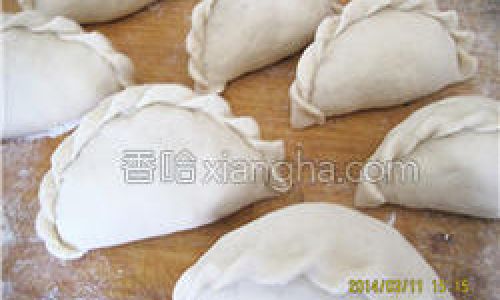
- Whisk 1 part flour with 5 parts water/milk.
- Cook over low heat until thickened.
- Cool before incorporating into the dough.
Optimize Fermentation
- Proofing Time: Allow the dough to rise in a warm, draft-free environment (75–80°F/24–27°C). Whole wheat dough may require 10–15% longer to rise due to the bran’s enzyme activity.
- Avoid Overproofing: Over-fermented whole wheat dough can collapse during steaming.
Steam with Precision
- Use a bamboo steamer or a pot with a tight-fitting lid to trap steam.
- Line the steamer with parchment or cabbage leaves to prevent sticking.
- Steam buns over medium heat (not boiling) to avoid sudden temperature spikes, which can cause blistering or collapse.
Step-by-Step Recipe: Whole Wheat Steamed Buns
Ingredients (makes 12 buns):
- 2 cups (240g) whole wheat flour
- 1 cup (120g) all-purpose flour (optional, for a lighter texture)
- 1 tbsp vital wheat gluten (if using 100% whole wheat)
- 1 tsp instant yeast
- 2 tbsp sugar
- ½ tsp salt
- ¾ cup (180ml) warm water (105–115°F/40–46°C)
- 1 tbsp neutral oil (e.g., vegetable or canola)
- Filling of choice (e.g., seasoned ground pork, char siu, or sweet red bean paste)
Instructions:
-
Activate Yeast:
In a small bowl, combine warm water, sugar, and yeast. Let sit 5–10 minutes until frothy. -
Mix Dry Ingredients:
In a large bowl, whisk flours, vital wheat gluten (if using), and salt. -
Combine Wet and Dry Ingredients:
Pour the yeast mixture and oil into the dry ingredients. Stir with a wooden spoon until a shaggy dough forms. -
Knead:
Turn dough onto a lightly floured surface. Knead 8–10 minutes until smooth and elastic. If using 100% whole wheat flour, the dough will be slightly sticky but manageable. -
First Rise:
Place dough in a greased bowl, cover with a damp cloth, and let rise in a warm spot for 1–1.5 hours, or until doubled in size. -
Shape Buns:
Punch down the dough and divide into 12 equal pieces. Flatten each piece into a 4-inch circle, add 1–2 tbsp filling, and pinch the edges to seal. Place buns on parchment squares. -
Second Rise:
Let buns rest 20–30 minutes until puffy. -
Steam:
Arrange buns in a steamer, leaving 1–2 inches between them. Steam over medium heat for 12–15 minutes. Turn off heat, wait 2–3 minutes, then uncover to prevent condensation from dripping onto buns.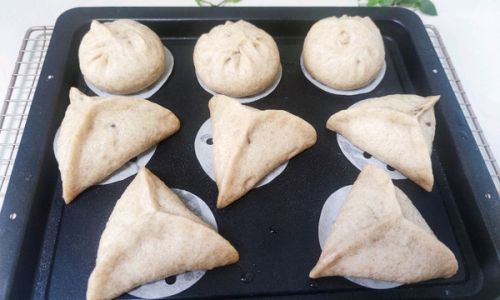
Troubleshooting Common Issues
-
Dense Buns:
- Increase kneading time.
- Add vital wheat gluten.
- Reduce whole wheat flour ratio.
-
Tough Texture:
- Avoid overworking the dough.
- Use a tangzhong starter for added moisture.
-
Collapsed Tops:
- Ensure even steaming temperature.
- Do not overfill buns.
-
Bitter Flavor:
Toast whole wheat flour in a dry skillet before use to mellow the taste.
Nutritional Benefits of Whole Wheat Steamed Buns
Switching to whole wheat flour elevates the nutritional profile of steamed buns:
- Fiber: A single bun provides 3–4g of fiber (vs. 1–2g in refined versions), aiding digestion and satiety.
- Vitamins and Minerals: Higher in B vitamins, iron, and magnesium.
- Lower Glycemic Index: Whole wheat’s fiber slows carbohydrate absorption, preventing blood sugar spikes.
Cultural and Creative Adaptations
Whole wheat steamed buns fit into global cuisine trends, such as:
- Vegan Fillings: Stuff with spiced lentils, roasted vegetables, or tofu.
- Sweet Variations: Fill with date paste, coconut, or mashed sweet potato.
- Gluten-Free Options: Substitute whole wheat flour with a gluten-free blend (e.g., rice flour, tapioca starch) and xanthan gum.
Conclusion
While whole wheat flour presents unique challenges for steamed buns, strategic adjustments—such as hydration control, gluten enhancement, and fermentation optimization—can yield nutritious, flavorful results. Experiment with flour ratios, fillings, and steaming techniques to strike the perfect balance between health and indulgence. Whether you’re a traditionalist or a wellness-focused baker, whole wheat steamed buns offer a satisfying twist on a beloved classic.
Final Tip: Practice makes perfect! Start with a 50:50 flour blend and gradually increase the whole wheat ratio as you refine your technique. Your taste buds—and your body—will thank you.
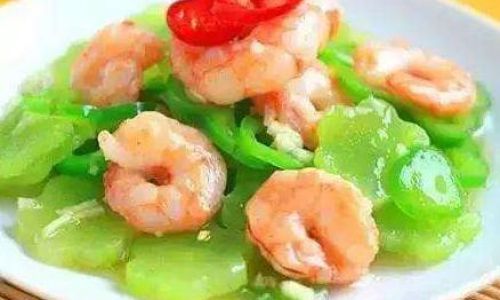
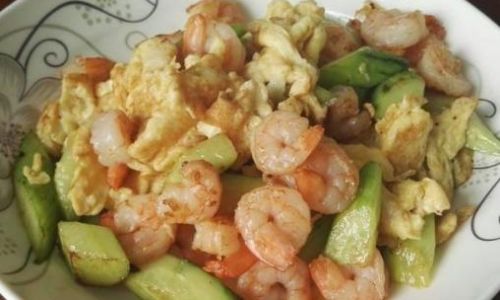
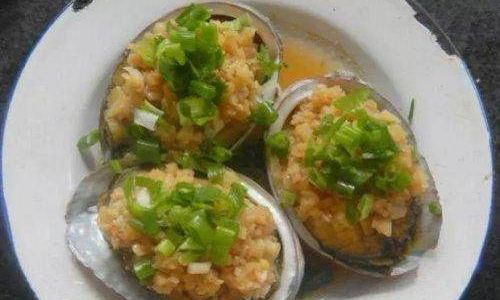
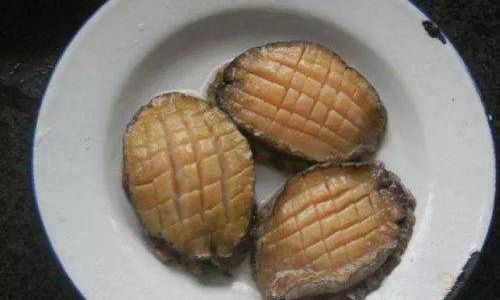
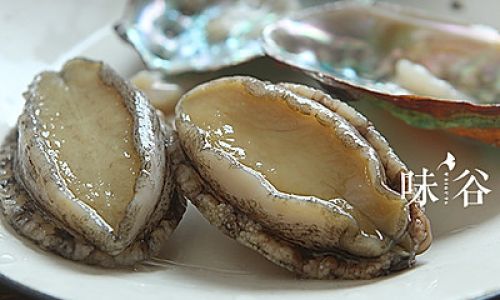
0 comments